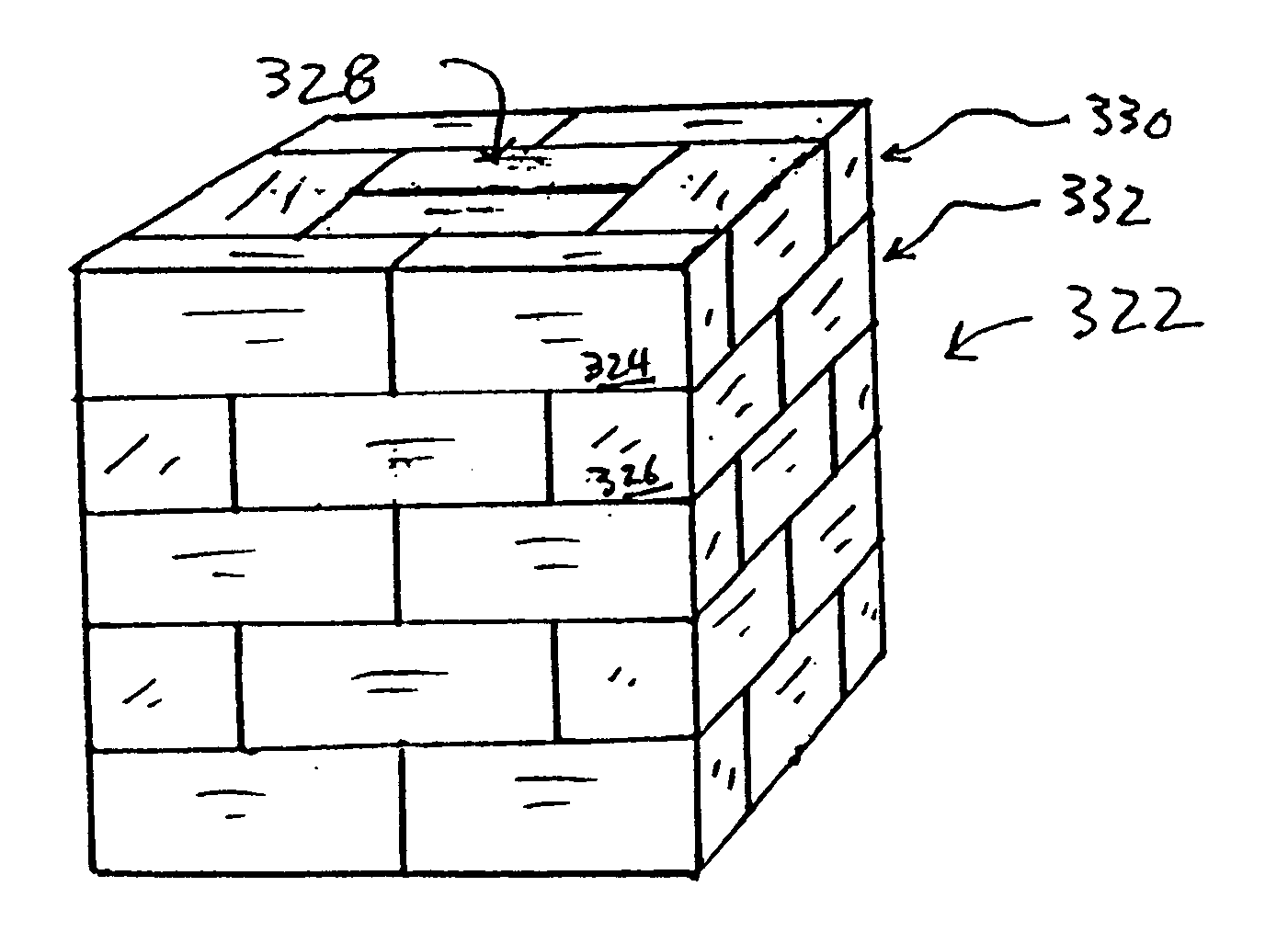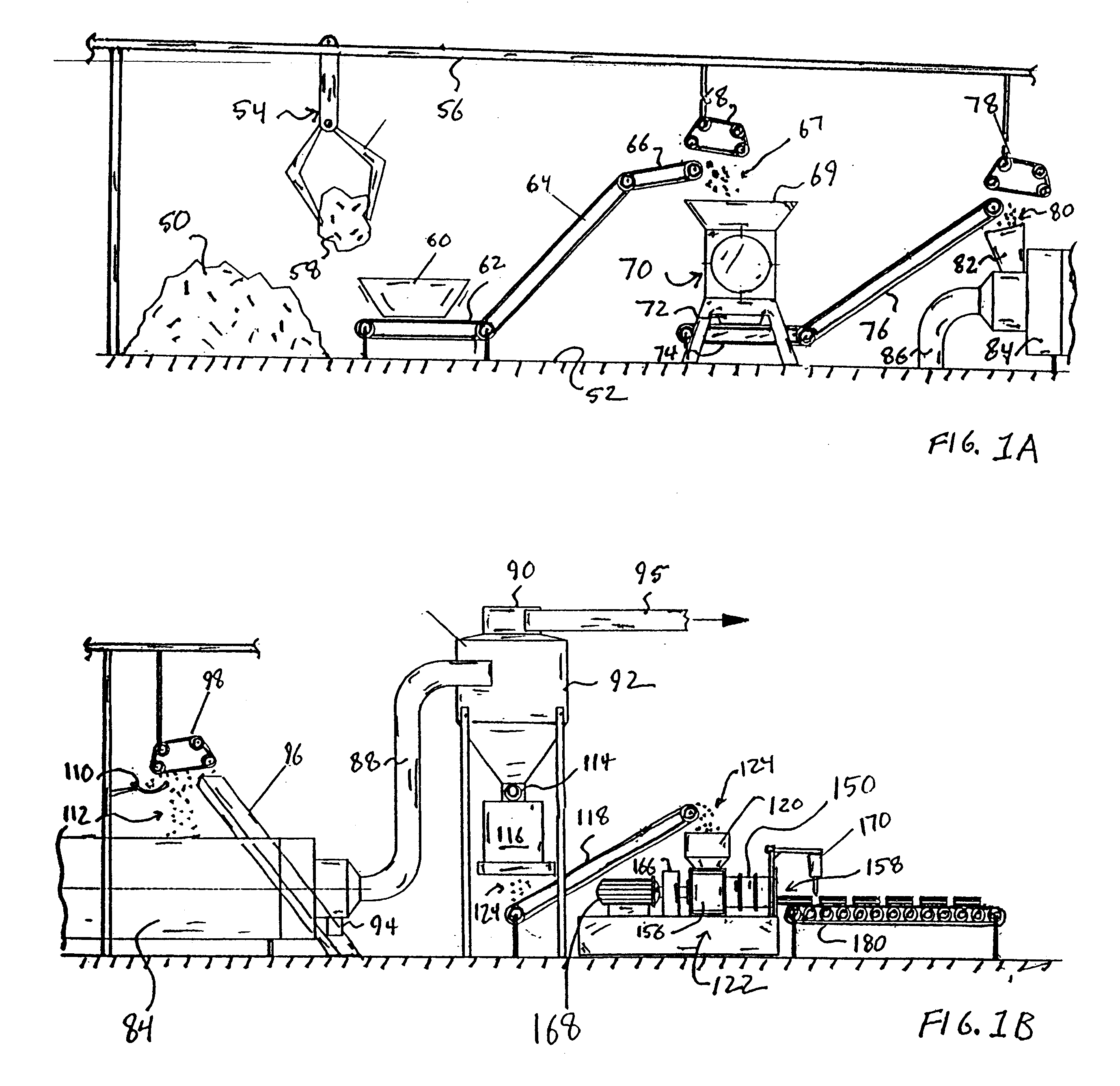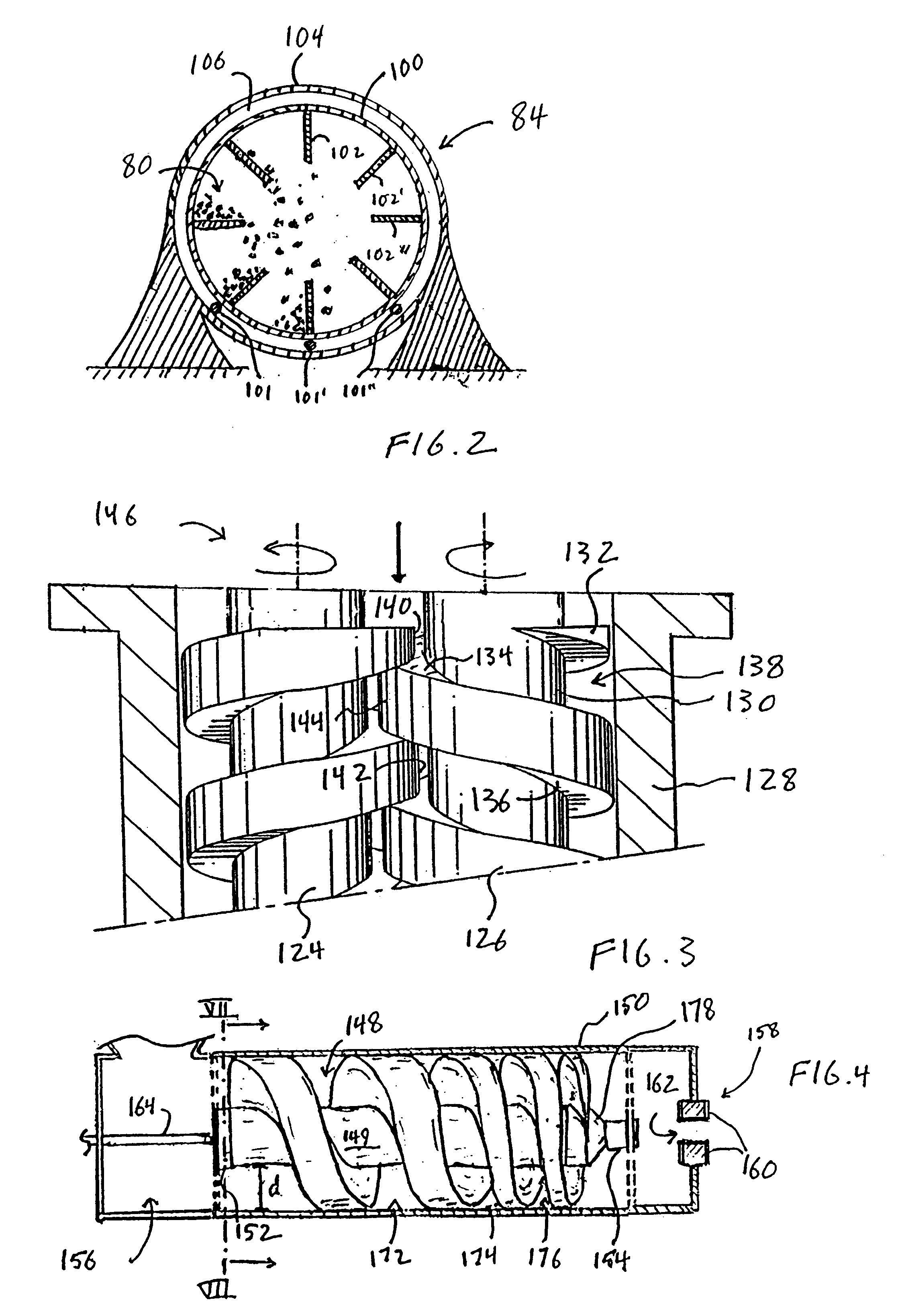Municipal waste briquetting system and method of filling land
a municipal waste and briquetting technology, applied in the field of municipal waste briquetting system and filling land, can solve the problems of slow degradation of municipal waste buried in landfill, objectionable odor, and slow degradation of economic benefits, and achieve the effects of reducing environmental impact, reducing environmental pollution, and reducing environmental pollution
- Summary
- Abstract
- Description
- Claims
- Application Information
AI Technical Summary
Benefits of technology
Problems solved by technology
Method used
Image
Examples
Embodiment Construction
CHARACTERIZATION OF BRIQUETTES PRODUCED BY MEANS OF THIS INVENTION
The disposal of briquettes formed in packs or as loose items at landfill sites can be realized if the briquettes respond to certain characteristics in terms of mechanical strength and ability to withstand attack from atmospheric agents.
To this end, three sets of parameters are measured to fully characterize the behavior and the properties of briquettes originated from MSW.
These parameters are:
Mechanical properties
Biological properties
Chemical / physical stability in relation to leaching characteristics
1) Mechanical Properties
In general, mechanical properties of briquettes produced by means of this invention are a function of many variables such as trash composition, ground size distribution, moisture content at the end of the drying process, efficiency in the removal of metals and inert, temperature profile inside the briquetting machine during the final stage of the process
Briquette density and overall mechanical resis...
PUM
| Property | Measurement | Unit |
|---|---|---|
| Fraction | aaaaa | aaaaa |
| Fraction | aaaaa | aaaaa |
| Fraction | aaaaa | aaaaa |
Abstract
Description
Claims
Application Information
 Login to View More
Login to View More - R&D
- Intellectual Property
- Life Sciences
- Materials
- Tech Scout
- Unparalleled Data Quality
- Higher Quality Content
- 60% Fewer Hallucinations
Browse by: Latest US Patents, China's latest patents, Technical Efficacy Thesaurus, Application Domain, Technology Topic, Popular Technical Reports.
© 2025 PatSnap. All rights reserved.Legal|Privacy policy|Modern Slavery Act Transparency Statement|Sitemap|About US| Contact US: help@patsnap.com



